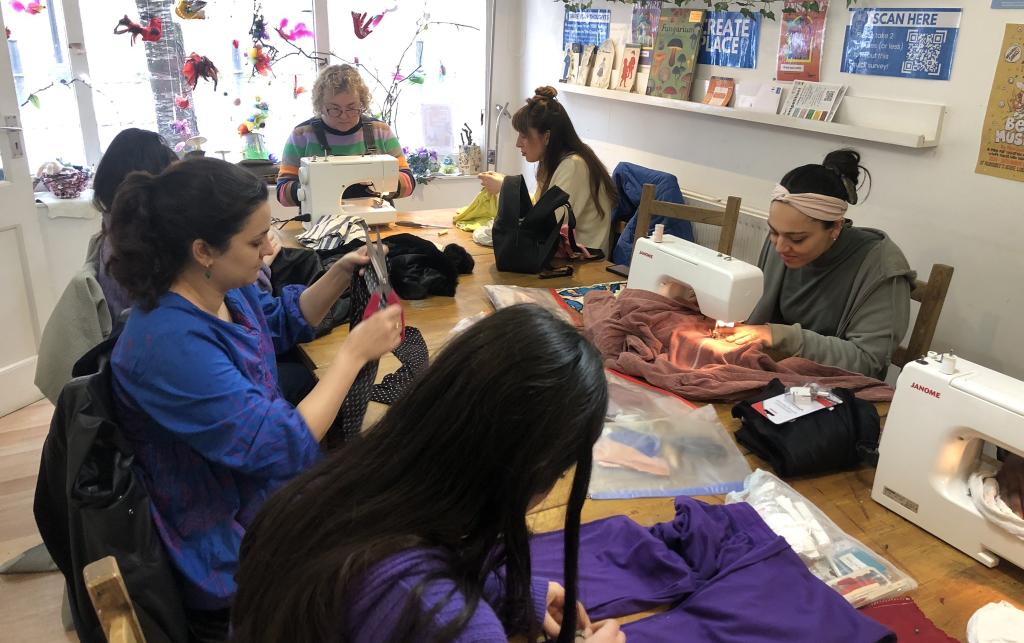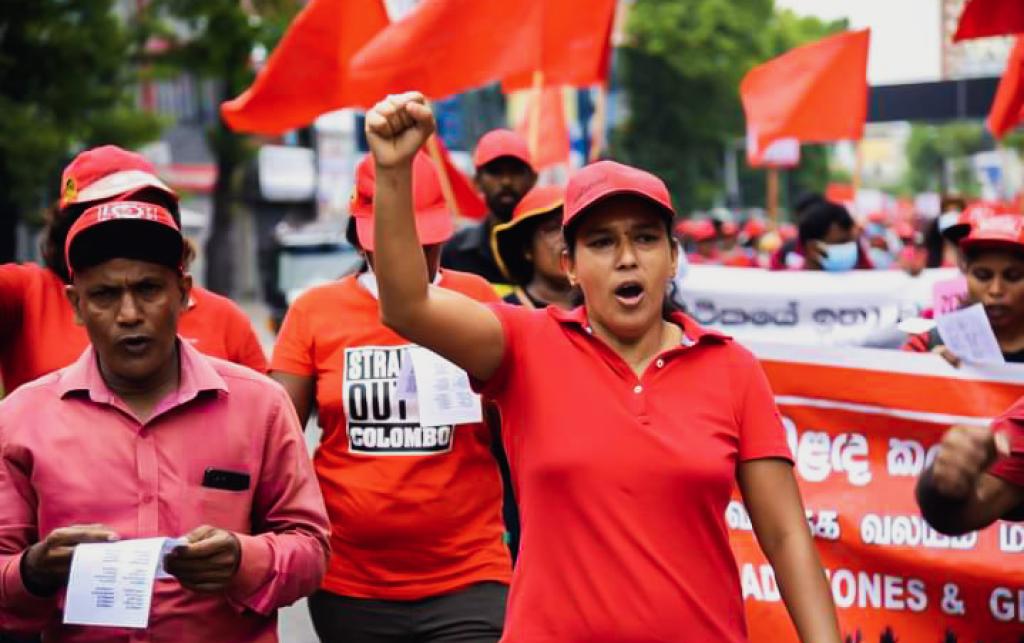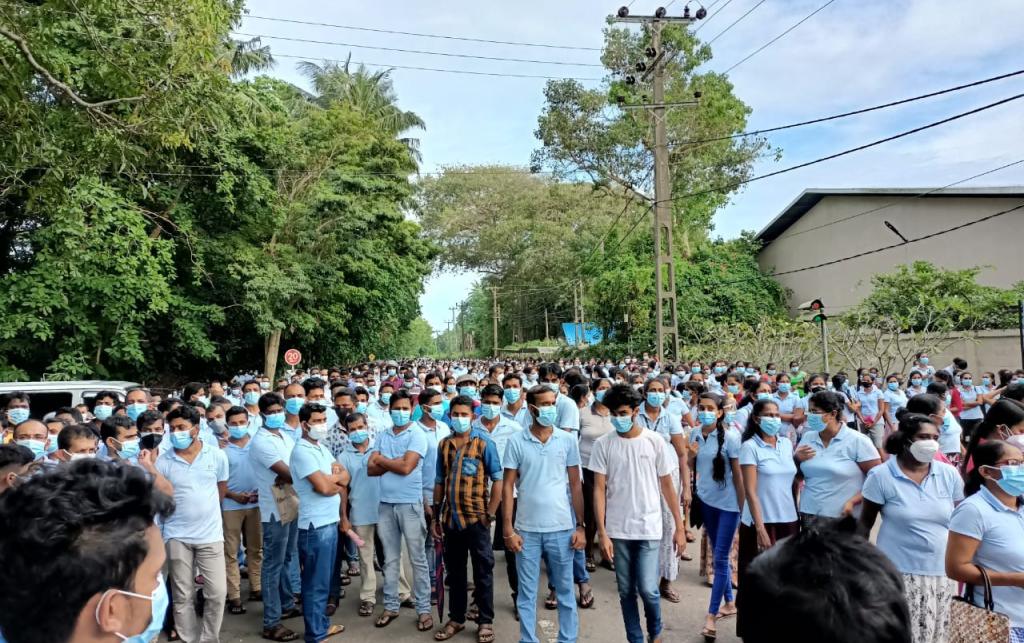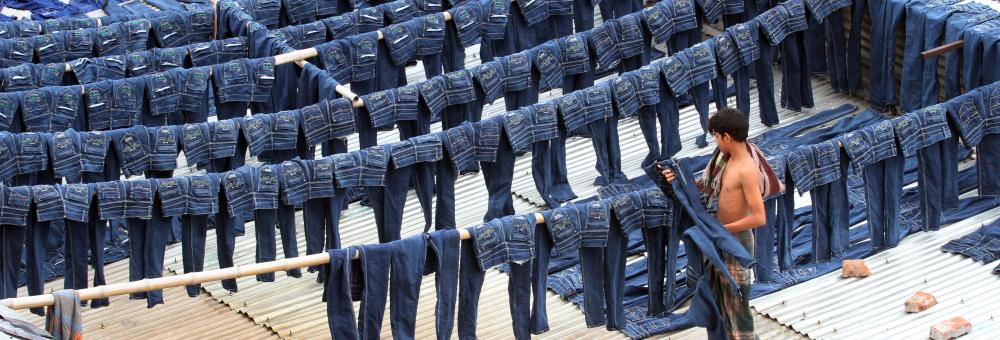Conclusion: changes for a fairer and more sustainable system
Building on the imagination of chapter six and bridging the gap to our necessary future, this chapter offers suggestions of changes that could be made, from the small change of recognising the need to care for and repair the clothes that are already in our possession, to embracing the idea that it is not just rips in jeans or holes in jumpers that need repairing – but a vast system of inequalities built upon colonialism and capitalist exploitation.
Repair
An essential part of any new fashion system is repair.
Discussing his ideal fashion system, circularity expert Paul Foulkes-Arellano describes a world of ‘value-added repair’, whereby clothes are updated and made even better negating the need for constant new clothes. “You’d get your wardrobe renewed in the same way that you don’t buy a new house – you repaint it. My house is 110 years old; the shell is exactly the same, but inside it looks nothing like it did when it was built. Every 10-20 years it goes through a radical redesign.”
Paul calls the building of upcycling communities “eminently sensible,” seeing it as not only making environmental sense, but a way to develop the huge emotional value attached to the clothes we already own.

Fashion therapy East London: an alternative relationship to fashion
Eleanor Tull and Sarah Richards run Fast Fashion Therapy in East London, teaching people how to repair and alter their clothes to help them buy less and lengthen the lifespan of what they already own. As active proponents of repair, they say it is a gateway to sustainable fashion that is far cheaper and more accessible than other forms of sustainable clothing.
“It can be done by almost anyone whether they have any experience of sewing or making before. It only requires basic equipment, like needle and thread, that are cheap to buy to get started,” Eleanor says. “Repairing clothing or other items also gives people a chance to slow down, you have to stop and think about the problem you’re trying to solve, consider how you can fix it and be patient in completing your repair.”
Repairing clothes is also a valuable tool for connecting people with important design principles. “Working out how to put something back together can also be a valuable way of seeing how it’s been made in the first place and what techniques or items of clothing need improvement. You can learn a lot from seeing which materials get the most holes or which areas of jeans rip the most.”
Repairing inequalities
Scaling up repair so that there are workshops in every neighbourhood would connect people to the process of clothing production. “Repair can be a great way to appreciate the time that goes into every item of clothing, often people think the reason you can buy a t-shirt for £2 is because a machine has made it, but that’s not possible,” Eleanor continues. “Every item of clothing is handmade and learning this by stitching and repairing your own clothes can create a different relationship with them, and a deeper attachment to the work that’s gone into them.”
Using needle and thread repair as a means to recognise the hours and hours of human labour that goes into each garment is an important way of thinking about what else we can apply the concept of repair to. It is a way of thinking about clothing production as having been purposefully broken in a way that harms millions of people, while benefiting a tiny minority. A fashion system that pays millions of women in Bangladesh US$75 a month, while a few billionaires have parties on super yachts is a broken one, but there are steps that can be taken towards fixing this.
A living wage
Everyone working in the fashion industry should be paid a wage that they can live on.
“Decent work is about the right to employment to begin with, and that employers should provide a living wage for the employee and the family. It should ensure workplace safety without discrimination and the right of employees to organise as trade unions.” Anton Marcus, Joint Secretary of FTZ&GSEU in Sri Lanka.
A living wage121 must be guaranteed in law. This should include enforceable transparency measures that compel companies to guarantee and demonstrate labour costs as part of the pricing of products. It requires measures to control the pricing and ordering practices of big fashion, to ensure that costs are not unfairly passed down the supply chain, resulting in poverty pay for workers.
Big fashion must also be compelled to financially contribute to wage guarantees and severances for workers in supply chains. Global campaigns such as Wage Forward122 and Pay Your Workers – Respect Labour Rights123 have workable proposals that could protect workers in supply chain relationships here and now.
Universal public services
Everyone has the right to a dignified life, yet many millions are denied clean and safe water, nutritious food, affordable housing, sanitation, access to energy, or adequate healthcare. For many garment workers these conditions are a daily reality.
Universal services such as healthcare, education, housing, pensions, and social protection systems are crucial to protect people from the effects of climate injustice, prevent the spiral into poverty, and advance human rights, equality and justice. Yet they need to be funded from the public purse.
For too long, corporations and richer countries of the Global North have manipulated the rules of the global economy whilst countries of the Global South have been saddled with unfair debt and have lost out on crucial revenue through unfair tax policies and unethical corporate tax practices.
To repair this critically broken system, the rules of the global economy must shift towards fairness and justice, prioritising community need and protection of the planet, instead of profit. This means cancelling the high debt burdens including those of garmentproducing countries such as Pakistan, Bangladesh and Sri Lanka.

It means overhauling tax policies and tightly stitching the loopholes that enable corporate tax dodging on a massive scale. The UK plays a major role in creating the environment for corporations to move and even hide profits to avoid paying fair tax.124 Countries such as the UK have a responsibility to correct these wrongs by overhauling the unfair tax system that is allowing global corporations to extract profits that should be going into the public purse of the countries where they operate.
Reducing corporate power and control
Legislative actions that increase the responsibility of fashion companies are vital for accountability and justice. Effective legal frameworks can both encourage and enforce greater due diligence, investment in workplace improvements, protection for workers, and are the tool to hold corporations and their leaders to account.
Voluntary corporate social responsibility agreements have failed. It is time to repair the damage with legislation and binding agreements. One example of an agreement that holds big fashion to account is the International Accord for Health and Safety in the Textile and Garment Industry which evolved from the landmark Bangladesh Accord on Fire and Building Safety, established after the collapse of the Rana Plaza factory in April 2013.125 The Accord established a factory inspection programme that saved thousands of lives and made brands accountable for the factories they contract to. Ground-breaking at the time, many brands had to be cajoled into signing up to the Accord, as of 2023, many major brands including Levi’s and Walmart are still refusing to sign.

A second example is the Dindigul Agreement126 which was signed in April 2022 after a year-long campaign led by the Tamil Nadu Textile and Common Labour Union (TTCU), a Dalit women’s union in India. The agreement seeks to end gender-based violence in factories after 20-year-old garment worker Jeyasre Kathiravel was murdered. It was signed by H&M, Gap and PVH Corp. and the Tamil Nadu-based supplier where Kathiravel worked – Eastman Exports. The other signatories to the agreement are the TTCU, the Asia Floor Wage Alliance127 and the Global Labor Justice-International Labor Rights Forum. The first year’s results from the agreement have been remarkable.128 These beacons of hope in the garment industry show us that what was broken can be fixed, as long as workers voices are centred.
Organised labour
It is no surprise that in an industry notorious for worker exploitation, bosses would resist the rights of workers to form trade unions. Unions have led the way in securing employment rights in many countries over the years. They have changed the nature of ‘work’ for the better and created social progress such as winning rights for women. Unions enable workers to come together as a powerful, collective voice to communicate with management about their working terms and conditions, and to push for safe, fair, and decent work. From health and safety to higher wages, parental leave to holiday entitlement, a thriving trade union sector is key to the realisation of workers’ rights.
Big fashion, however, tries to distance itself from workers in the Global South where union busting is rife, ignoring their responsibilities whilst workers are targeted, sacked, and even killed for their trade union involvement.129
Here in the UK, we also have some serious repair work to do. The scandal of poor conditions for workers in the supply chains of companies such as Boohoo have hit UK headlines.130 For many workers in garment factories, trade unions are a lifeline in protecting their rights, realising safer working conditions, and improving wages.
The importance of trade unions in empowering worker voices through ensuring freedom of association and collective bargaining not only brings change at factory and industry level, it empowers working people generally. This will be key to delivering a just transition truly shaped by workers.
Protecting our planet
Scientists have identified nine essential environmental processes that regulate the stability and resilience of the Earth system, including regulation of the climate, landsystems change, freshwater use and biodiversity loss, Multiple studies show that disruption to any one of these is likely to cause widespread and irreversible environmental changes that threaten the ability of humanity and all other living species to survive. It is now clear that many years of unsustainable and unequal extraction of the Earth’s resources has led to at least six of these essential boundaries being breached, as of 2023.131
Industries such as big fashion are iconic of the broader economic system that has driven to the breakdown of these vital ecological systems. As Global North countries seek to transition towards renewable energy in response to the climate crisis, industries cannot continue to behave as if the planet’s resources are infinite. The transition must instead take account of ecological limits and centre a wider bio-centric view of our ecosystems that prioritises creating the conditions for humanity and nature to thrive.
One key step to achieving this is ensuring that land rights are realised, for the small farmers and peasant communities who maintain agro-ecological approaches to crop production for clothing and other industries, and for the Indigenous communities who have acted to conserve critical elements of nature against the odds.
For the fashion industry, as for the economy at large, the transition to a more ecologically sound future cannot simply mean switching to renewable energy sources. It is vital that the transition pathways from the current crisis must not employ the same logic of extraction to minerals and materials. Instead, transformation of the industry must be based on a holistic view of the whole production cycle; transforming its approach to land, water, chemical and synthetic materials usage to re-centre the sanctity of the lands and livelihoods of those that it has mercilessly exploited up to now.
Climate reparations
It is no secret that globally, the richest 10% are responsible for the nearly 52% of the total emissions driving the climate crisis.132 The US, UK, Canada, EU, and Russia alone are responsible for 55% of cumulative emissions.133 Global North countries have used up more than their fair share of the carbon budget in what has been termed ‘carbon colonialism’. It has been calculated that this colonisation of the carbon budget would require climate reparations of US$192 trillion, with the UK and EU combined responsible for US$46 trillion and the US for US$80 trillion, due to vast historical emissions.134 The countries least responsible for the climate crisis are also the countries with the biggest limitations on them to adequately respond to the scale of its impacts. After hundreds of years of exploiting the Global South, governments of the countries that have caused the most damage must take responsibility. That must include:
- Doing their fair-share of the action required to limit temperatures well below 1.5ºc by cutting their emissions to real zero by 2030.
- Stopping the promotion of false solutions such as net zero, negative emissions technologies and the commodification of nature.
- Providing new and additional grant-based climate finance based on need.
- Supporting a global goal on adaptation, with the means of implementation including finance and technology to allow countries of the Global South to adapt to the climate crisis.
- Regulating banks that are funding the climate crisis.
- Making the fossil fuel, agribusiness and fashion industries disproportionately responsible for emissions at the centre of paying for a radical just transition.
- Reckoning with colonial pasts that stole land, labour and resources.
- Giving frontline communities the freedom, resources and tools to mitigate and adapt to the changing climate, and related challenges in the present.
- Preventing the breach of all planetary limits, including those of nature and our ecosystems using a fair shares approach to the equitable sharing of resources.
In movements around the world there is a growing demand for climate reparations – seeking recompense from those countries that caused and perpetuated harm. Forms of reparation have included apologies, financial compensation, commemorations, and measures to stop the harms and to ensure they are never repeated.
Countries on the frontlines have been demanding equity for decades, campaigning for those that have contributed most to the climate crisis to decarbonise first. The big fight ahead is to ensure that measures to address ‘loss and damage’ are implemented by those countries in the Global North that are most responsible. This must go hand in hand with ensuring that a global transition to renewable energy is equal and just, and that Global South countries are supported through international co-operation, including financial and technology transfers by rich Global North countries.
Towards a just future
We can and should learn to repair our clothes, but truly meaningful repair must mean a move away from our current extractive economic model, which exploits people and the natural world for profit. Only then can we build a just transition that transforms the clothing production into a sustainable system we can all be proud of. The dogma of growthism – that all sectors of the economy must mindlessly grow all the time, no matter the consequences – is a starkly dangerous political ideology. We know it has led to workers’ rights abuses on a global scale, to a shaking planet, and to stark poverty and inequality.
But as we hope to have illustrated with this report, amid the injustice is a place of great possibility. The moment we choose not to have our clothes and creativity be an excuse to bolster the economic interests of the Global North, we can change everything. The moment we take back our power and reject the singular drive to profit, we can end the system that expects the Global South to service the Global North that threatens the very ecosystems on which humanity relies on, and recognises that we are part of nature. The challenge is to ensure that in changing the fashion industry, the voices of those on the frontline of this industry – the workers, homeworkers, farmers, spinners, and weavers – are at the forefront of directing change. As Kalpona Akter clearly says: “We want to have our space at the discussion table and to make sure we are not losing anything. Until then, don’t talk to us about green economies.”135 Only collectively, through listening and intense action, can we work towards a world where Bangladesh’s productive capacity is not organised around a single damaging export, but rather has been channelled into climate leadership and protection.
The evidence is clear: ultimately, we must fundamentally change the way our economies and societies are structured, including shifting the core value set that shapes our economic system towards one that centres care and well-being and allows everyone to live with dignity.
Both people and nature, must heal. We need to repair our relationship with the Earth and move towards an understanding of ourselves as just one part of the Earth’s ecosystems – to ensure that the natural world and all of our fellow species are provided with a right to thrive. This requires us to recentre the rights of indigenous peoples, challenge the systems of racial and patriarchal oppression, and decolonise the world by ending unsustainable consumption and extraction of Earth’s natural resources.
To achieve truly transformational change, we must rebuild our imaginations, to allow ourselves to build a bold vision of where we must go. In her seminal book Braiding Sweetgrass, Robin Wall-Kimmerer writes about students in her ecology class being unable to imagine a beneficial relationship between humans, animals, and the planet, and she asks: “How can we begin to move towards ecological and cultural sustainability if we cannot even imagine what the path feels like.” Wall-Kimmerer therefore writes for the need for restoration with “re-story-ation.” This is just as true for the fashion industry.136
The hope is that in placing the systems that make our clothes under the microscope, this report has set out a bold starting point for opportunity, imagination and action for a just transition of the fashion industry. When we remember that everything we will ever wear is the product of two interconnected things – human labour and land – we must place the well-being of both at the heart of our economies to realise a truly sustainable future for us all.
- 121A living wage differs from country to country but should ensure that working people can earn enough to meet all of their daily needs and expenses and have discretionary income left over to ensure well-being and invest in their own or their children’s future.
- 122https://wageforward.org/
- 123https://www.payyourworkers.org/coalition
- 124Chapman B. UK by far the biggest enabler of global corporate tax dodging, groundbreaking research finds. The Independent. 28 May 2019. https://www.independent.co.uk/news/business/news/uk-corporate-tax-avoid…
- 125International Accord. https://internationalaccord.org
- 126Fact Sheet: The Dindigul Agreement to End GenderBased Violence and Harassment. Global Labor JusticeInternational Labor Rights Forum. 10 May 2022. https://laborrights.org/publications/fact-sheet-dindigul-agreement-end-…
- 127Asia Floor Wage Alliance. https://asia.floorwage.org
- 128Global Labor Justice-International Labor Rights Forum. https://laborrights.org
- 129aton E. Union Garment Workers Fear “an Opportunity to Get Rid of Us.” The New York Times. 8 May 2020. https://www.nytimes.com/2020/05/08/fashion/coronavirus-garment-workers-…
- 130Butler S. Activists to question Boohoo on living wage for Leicester garment workers. the Guardian. 17 June 2022. https://www.theguardian.com/business/2022/jun/17/activists-to-question-…
- 131Information drawn from Planetary Boundaries research conducted by the Stockholm Resilience Centre. Stockholm University available at https://www.stockholmresilience.org/research/planetary-boundaries.html
- 132World’s Richest 10% Produce Half of Carbon Emissions While Poorest 3.5 Billion Account for Just a Tenth. Oxfam International. 2 December 2015. https://www.oxfam.org/en/press-releases/worlds-richest-10-produce-half-…
- 133Ritchie H. Who has contributed most to global CO2 emissions? Our World in Data. 1 October 2019. https://ourworldindata.org/contributed-most-global-co2
- 134Fanning A. L. and Hickel J. Compensation for atmospheric appropriation. Nature Sustainability. 5 June 2023. https://www.nature.com/articles/s41893-023-01130-8 The research calculates compensation from Global North countries overshooting the carbon budget from 1960 to 2019, and to achieve net zero from 2020 to 2050, owed to undershooting Global South countries.
- 135Kalpona Akter interview with Tansy Hoskins 19th Jan 2023
- 136Kimmerer RW. Braiding Sweetgrass: Indigenous Wisdom, Scientific Knowledge and the Teachings of Plants. Minneapolis, Minnesota. Milkweed Editions
